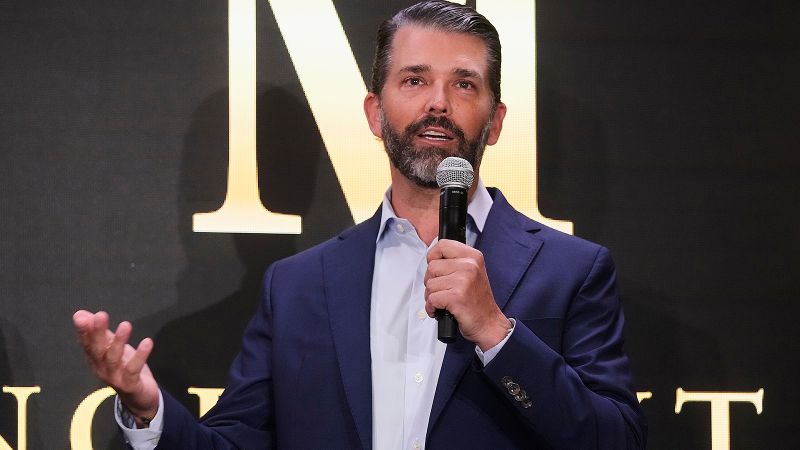On Monday, the Trump Organization announced the launch of its new Trump Mobile wireless service, proudly declaring that its upcoming T1 smartphone would be “designed and built in the United States.” This announcement has captured significant media attention and sparked discussions about the feasibility and implications of such a claim within the current technological landscape.
However, experts have expressed skepticism regarding the prospect of a U.S.-built smartphone, especially in light of the specified features, pricing, and timeline mentioned by Donald Trump Jr. and Eric Trump. Their announcement has drawn comparisons with existing smartphones manufactured in China, leading industry analysts to believe that the Trump T1 might not be as uniquely American as it is presented. Todd Weaver, CEO of Purism—one of the few companies producing smartphones in the U.S.—commented on the improbability of achieving the promised specifications without prior investments in domestic manufacturing capabilities.
The Trump Organization has yet to respond to CNN’s request for further details regarding the production process of the T1. As stated in earlier communications, former President Donald Trump is not involved in the day-to-day activities of the Trump Organization, which is primarily managed by his sons. This smartphone launch coincides with ongoing efforts by the former president to rekindle American manufacturing jobs, particularly in the tech sector, through pressure on various companies to relocate production back to the United States.
While the Trump family claims on Trump Mobile’s platforms that the T1 will be “Made in the USA,” Eric Trump mentioned in a discussion with conservative media figure Benny Johnson that “eventually all the phones can be built in the United States.” Such comments raise questions about whether the T1 will truly be manufactured domestically from the outset.
Further investigating the technical specifications of the Trump T1 phone, experts, including analysts Jake Weinbach and Todd Weaver, pointed to remarkable similarities between the T1 and existing models, particularly the Revvl 7 Pro 5G, produced by Chinese manufacturer Wingtech. Priced at approximately $169, the Revvl 7 Pro 5G mirrors key aspects of the T1 in terms of screen size, battery capacity, and storage options. Both devices even feature a headphone jack—an increasingly rare characteristic in modern smartphones—indicating a shared lineage in their designs.
Adding a layer of complexity, another smartphone, the Vtex Smart Phone, listed on Made-in-China, also shares significant specifications with the T1, including battery capacity and software compatibility. This leads analysts to conclude that it’s not uncommon for companies to contract original device manufacturers (ODMs) to build their brand-specific devices, suggesting that the components used in the T1 may not be uniquely sourced from U.S. suppliers.
The Trump Organization’s recent press releases clarify that Trump Mobile products are not directly designed or manufactured by them, which implies an outsourcing of production to other factories. This raises further doubts about the authenticity of the “Made in USA” claim, especially given the lack of domestic fabrication facilities capable of producing smartphones in the short term. Ryan Reith from International Data Corporation emphasizes that the timeline for a September 2025 launch would still see the majority of components coming from overseas, which challenges the feasibility of their claims.
Pressure from former President Trump on major companies, including Apple, to localize production remains a focal point of his manufacturing policy, despite significant hurdles inherent in supply chain adjustments and labor skill gaps domestically. These circumstances indicate that the anticipated tech products, including Apple’s iPhone, could face price increases or design changes as companies grapple with relocating production.
Moreover, Weaver has conveyed that intermediaries affiliated with the Trump Organization had recently explored potential partnerships with Purism regarding domestic smartphone manufacturing. Although the Liberty Phone by Purism emphasizes an American manufacturing identity, it still relies on components sourced from global suppliers, illustrating the intricate complexities of establishing a fully domestic production process in technology.
With the Federal Trade Commission’s stringent guidelines on “Made in the USA” claims, it becomes imperative for the Trump Organization to navigate these regulations carefully. Weaver projects that there may be substantial revisions in strategy to address the reality of U.S. smartphone production, emphasizing the considerable challenges involved in aligning supply chains, manufacturing capabilities, and regulatory compliance.
In summary, the ambitions surrounding the Trump T1 smartphone position the Trump Organization at a crossroads of American manufacturing and modern technological demands, contending against expert skepticism and logistical obstacles that define the current landscape of smartphone production. As details continue to unfold, the question remains whether this venture can authentically deliver on its promises or will reflect the complexities inherent in bridging modern technology with domestic manufacturing realities.



